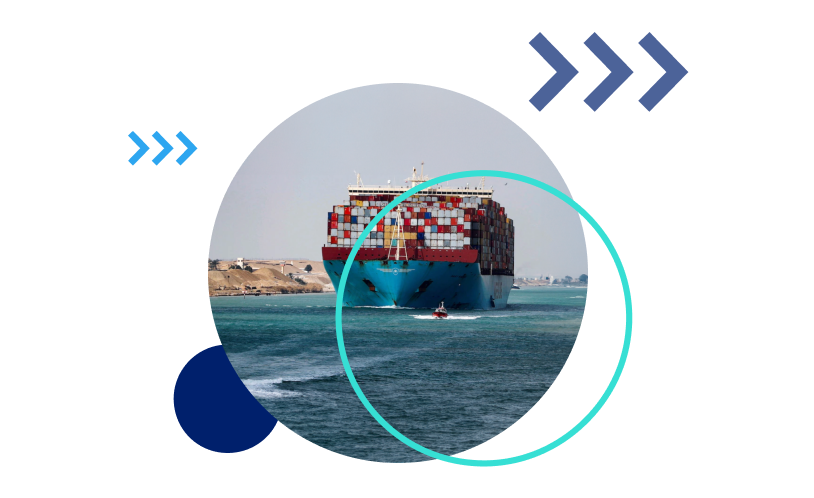By: Forceget Supply Chain Logistics
The global battery market had expanded and grew to 326,57 billion USD. This further proves the increased demand for electronic vehicles (EVs), portable electronics, and renewable energy storage solutions.
However, shipping batteries presents a unique set of challenges due to strict safety regulations, transportation restrictions, and complex documentation requirements.
Shipping Lithium Batteries
Shipping lithium-ion battery incidents on airplanes and airports have steadily increased in recent years, raising safety concerns. The Federal Aviation Administration (FAA) reports a significant rise in incidents involving shipping lithium batteries, which can overheat and cause smoke, fire, or extreme heat.
This highlights the importance of proper handling and safety procedures for passengers and crew when traveling or shipping lithium-ion batteries.
Looking for an all-in-one freight solution?
Search now to compare, book, and manage your freight
Battery Shipping Regulations
The first step for businesses shipping battery products is familiarizing themselves with the relevant regulations.
These regulations vary by country and region, so it’s crucial to research the specific requirements for each intended destination.
Key Regulatory Bodies
- International Air Transport Association (IATA): Sets guidelines for air cargo, including lithium battery transportation.
- International Maritime Organization (IMO): Regulates the shipment of dangerous goods by sea, including lithium (metal) batteries.
- United Nations (UN): Classifies and identifies dangerous goods using a globally harmonized system.
Elements of Complying Regulations
There are crucial aspects to complying with battery shipping regulations. You need to identify your battery products according to the UN’s dangerous goods classification system and apply proper labeling.
Use packaging materials and configurations that meet specific fire resistance, cushioning, and containment standards.
Provide accurate and complete documentation such as Safety Data Sheets (MSDS) and commercial invoices.
Understand the limitations on transportation methods like air freight based on battery type, capacity, and state of charge.
And don’t forget, partnering with a reputable freight forwarding service can provide valuable assistance.
Find the best rates on international freight
It takes less than a minute – no signup required!
Transportation Restrictions for Shipping Battery Products
While battery products offer many benefits, their transportation across borders presents specific challenges due to restrictions imposed by various methods:
Shipping Batteries by Air
Specific transportation methods, particularly air freight, impose restrictions on shipping lithium batteries by air.
Regulations often restrict the total weight and dimensions of packages containing lithium-ion batteries.
Specific labels, such as the UN identification number and “Lithium Ion Battery” marking, are mandatory for air shipments.
Batteries shipped by air may need to be within a specific state of charge (SOC) range, typically below a certain percentage, to minimize fire risk.
Ocean Freight
Batteries are classified based on their properties, and proper segregation from other cargo might be necessary for safer transport.
Ocean transport may require specific packaging certifications and materials to withstand potential moisture or rough sea conditions.
Additional documentation, such as declarations of dangerous goods, may be required for ocean shipments.
Transporting Batteries by Road and Rail
While these methods may offer more flexibility in package size, regional regulations still need to be carefully considered.
Some types of trucks or railcars might have restrictions on transporting dangerous goods, including lithium-ion batteries.

Optimizing Packaging and Documentation
Safe and efficient delivery of your battery products hinges on meticulous packaging and accurate documentation.
Packaging Essentials
Using packaging materials specifically designed to resist fire and minimize the risk of propagation in case of an incident. Implement proper cushioning materials to absorb shocks and vibrations during transit and ensure adequate insulation to maintain temperature stability.
Select packaging configurations that effectively contain the battery and prevent any potential short circuits or leakage.
As mentioned, use packaging that meets the requirements and certifications mandated by the United Nations for transporting dangerous goods.
Essential Documentation
Accurately classify your battery products according to the UN’s dangerous goods system and apply the corresponding labels.
Provide comprehensive safety information about the battery product, including its composition, potential hazards, and handling procedures.
Accurately reflect your battery products’ value, quantity, and description for customs clearance purposes. Specific regulations require additional documentation, such as declarations of dangerous goods or certificates of compliance.
Delays and Cost Considerations of Shipping Battery Products
- Delays of Shipping Battery Products
While offering great potential, shipping battery products might increase scrutiny when facing customs clearance, which can lead to delays and impact cost considerations.
Due to inherent risks associated with shipping lithium-ion batteries, such as potential fire hazards, customs authorities may conduct more thorough inspections to ensure compliance with safety regulations.
Customs officials meticulously examine accompanying documentation (e.g., Safety Data Sheets commercial invoices) to ensure they accurately reflect the product’s classification, labeling, and other vital details.
The additional scrutiny can lead to longer processing times at customs, potentially delaying clearance and delivering your goods.
Only complete or accurate documentation can lead to delays while corrections or clarifications are obtained, further extending the clearance process.
- Costs
The increase in packaging costs comes from the need for fire-retardant materials, specific cushioning, and UN-approved packaging.
Specific transportation methods, like air freight, might impose surcharges for handling dangerous goods, including lithium-ion batteries.
In some cases, authorities may assess additional fees based on the classification and value of your battery products.
By factoring in the possibility of extended customs clearance you can adjust your shipping timelines to minimize the impact of delays on your business operations.

Proactive Strategies for Shipping Battery Products
Working with a knowledgeable freight forwarder with expertise in navigating customs regulations and battery product shipping can significantly reduce the risk of delays and ensure proper documentation.
Don’t forget to review and double-check all documentation to ensure accuracy and completeness before shipment, avoiding delays due to missing or incorrect information.
Choosing the Right Shipping Freight Forwarder
Choose a provider with a deep understanding of battery product regulations and safety protocols across various destinations. They can guide you in selecting the appropriate packaging materials and configurations to meet fire-retardant, cushioning, and containment requirements.
The right provider will offer user-friendly tools and resources to simplify the complex process of shipping battery products, offering easy access to documentation templates and guides and minimizing errors and delays.
A comprehensive understanding of regulations helps avoid potential non-compliance issues that could lead to delays, penalties, or even cargo rejections at customs. By working proactively, you can ensure your goods’ smooth and timely movement without increased customs scrutiny.
Forceget is an international logistics company, is helping sellers with efficient
shipping methods from Asia to the US and Europe at the best prices and unmatched
innovation. Forceget’s digital platform enables international shippers to manage their
supply chain, instant quote, track, pay, and also manage their inventory in real-time.
Move your goods with a few clicks
Apply these tips when you book your next battery shipment with Freightos



